MARKET OVERVIEW
In the future, the global smoked salmon market and industry will advance further in response to continuing demand for premium seafood products. Smoked salmon, perhaps a delicacy around the world, is produced by a unique curing and smoking fish process, which makes the end product possess distinctive flavors and texture. This market is going to be a complex supply chain involving sourcing of raw materials, processing, packaging, and distribution-all these are going to shape out its future.
Global Smoked Salmon market scope is going to spread over different regions; key players will stretch their reach to fulfill growing consumer preferences for premium and healthy food options. Increases in disposable incomes, especially in emerging economies, will boost the market growth. The trend towards healthier, protein-rich alternatives also drives market development. As people become more health-conscious, smoked salmon is an attractive choice, especially because it contains all those essential nutrients like omega-3 fatty acids.
Geographically, the Global Smoked Salmon market will be diversified, and significant demand is expected to emanate from North America and Europe, which have traditionally been strong markets for smoked salmon. In North America, the U.S will remain the leading country, but the trend towards premium and luxury food products will increasingly dominate its consumption. While in Europe, Norway, Scotland and Iceland are going to be landmark producers with long term smoked salmon production experience. Slow growth will also be seen there as well as in Asia and the Middle East where more and more regions in these areas continue their interest in seafood for westernized diets.
Product variations shall also arise during the development of the market to suit the different choices of consumers. Smoked salmon will be available in different formats- slices, whole fillets, and preportioned packs-so directly convenient for consumers. Plus, the opening of more online retail outlets will streamline the distribution and make smoked salmon more accessible to people around the globe. Product innovation-combinations of smoked salmon new flavors-will also work to stimulate even higher consumer interest and open up fresh prospects for companies operating in the market.
The mode of utilization of packaging will play a crucial role in the future growth of the Global Smoked Salmon market since consumers are placing more onus on sustainability and "green" options. As green is set to dominate debate in terms of waste and environmental impact, companies will find further streamlined-waste and environmentally friendly solutions to package their products. Meanwhile, advancement in preservation technology providing extended shelf life for smoked salmon products to the supplier and consumer alike will continue unabated.
In the Global Smoked Salmon market, the intensity of competition will be established through formidable competitors and new entrants that will emerge in the market. Large producers will focus on mass production and distribution channels to achieve as many customers as possible. Smaller producers will focus on niche markets; they might specialize in artisanal, sustainably sourced, or organic types of smoked salmon. Strategic partnerships, acquisitions, and innovations will be the new mantras for businesses wanting to establish and further strengthen their positions in this ever-changing market.
The Global Smoked Salmon market will grow as demand from consumers for healthy, high-quality, and sustainably produced food items increases. Putting innovation, sustainability, and market access at the center of this growth, the industry will continue to evolve to meet the ever-growing requirements of the diverse consumers around the world.
Global Smoked Salmon market is estimated to reach $17,577.1 Million by 2031; growing at a CAGR of 5.1% from 2024 to 2031.
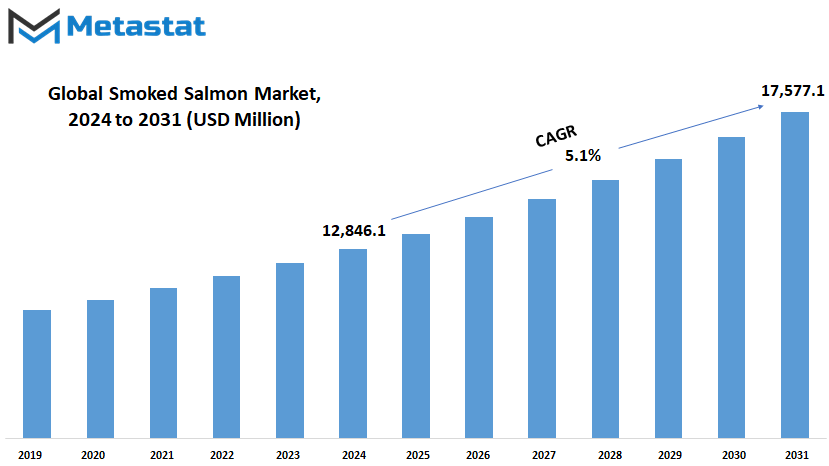
GROWTH FACTORS
As demand for premium, ready-to-eat products increases, smoked salmon becomes an ever more convenient and healthy food choice for many different consumers. Smoked salmon is also a market in significant growth, poised to take the center stage as global consumer preferences shift toward healthier food options. This aspect is particularly pronounced in a category in which people seek products enriched with omega-3s, as they are believed to prevent or control heart disease and other effects of brain aging. Moreover, the different preparation means of seafood, especially salmon, make them part of the recipes from most of the kitchens and gourmet meals.
In this regard, it is clear that there is a need for higher quality and sustainability in food, and thus, the increased concern for nutrition and quality makes the smoked salmon market grow. The market has become even more demanding because consumers not only desire convenience but also ethically sourced items. This has hence encouraged producers to develop organic and environmentally friendly practices. Smoked salmon products labeled as sustainably sourced are gaining traction, appealing to eco-conscious buyers who prioritize the planet's well-being alongside their dietary choices.
However, challenges may temper growth in the market. Firstly, it is costly to produce smoked salmon since vast investment is considered for sourcing, processing, and distribution. Further, the sustainability threat exists against salmon stocks from overfishing and environmental degradation. These represent a threat to supply chains, which ultimately lead to availability and fluctuations in pricing of these products.
Despite these challenges, the global smoked salmon market still presents positive future prospects. All factors considered, it appears that the more committed and more sustainable producers have much to gain as consumers become more focused on sustainability. Improvements in aquaculture and sustainable fishing will offset environmental concerns while putting tremendous pressure on the supply chain to provide vast quantities of fresh high-quality salmon. Organic markets, an increasing concern for health-conscious demographics, will also continue to grow in their demand for organic product lines.
Future developments in the technology of food preservation and packaging will further boost the trend of smoked salmon. Innovations that extend shelf life while maintaining flavor integrity will continue to answer the busy lifestyles of this day's consumers who want their food convenient without compromising its quality. Thirdly, deepened global awareness of health and sustainability will mean further growth in demand for smoked salmon, making it more popular in most households across the world.
In summary, though the international smoked salmon market is going through significant challenges, the growth potential is undeniable. With its production cost sustainability concerns being handled, the industry can be thriving to meet the rising demand of increasingly health-conscious and environmentally aware consumers.
MARKET SEGMENTATION
By Type
The global smoked salmon market has registered substantial growth in the last couple of years, driven by changing consumer preferences for gourmet and healthy foodstuffs. Smoked salmon also finds demand around the globe on account of its characteristic flavor and nutritional content. The global market for smoked salmon can be mainly bifurcated into two types: hot smoked salmon and cold smoked salmon. Both cater to distinct tastes and uses for cooking. Understanding these sectors and their promise helps explain how this market may model the food industry’s future.
Hot-smoked salmon is smoked over high heat, which leaves the flesh tender and flaky while developing a rich, smoky flavor. This style appeals to the adventurous palate and one preferring a ready-to-eat product with an ample flavor profile. It can also be a part of sandwiches, salads, or as a meal in its own right, and that is why it is such a great food for people with really hectic lifestyles. Since hot-smoked salmon will increasingly fit into modern living due to ease of preparation and robust taste, it is going to gain popularity.
The low temperature processing gives it that silvery smooth texture and delicate smoky flavor. This one is especially preferred for gourmet operations, like for canapés, bagels, or sushi. Cold-smoked salmon’s popularity will also continue growing with changing and exploratory tastes in culinary trends and consumers’ preferences to have premium experiences at home. Its positioning as a luxury food ensures its strong prospects in upscale retail and food service sectors.
Future Outlook
The smoked salmon market, overall, is expected to grow globally in the coming years. Health-conscious and adventurous consumers will propel innovation in flavor profiles and sustainable production methods worldwide. Being a staple of omega-3 fatty acids and high-quality protein, smoked salmon particularly aligns with the growing impetus on nutritious diets. Of course, owing to increasing environmental concerns, the evidence indicates that people look for responsibly sourced salmon. In fact, responsibility is also ensured in these operations with long-term sustainability. Companies that adapt themselves by offering such eco-friendly and traceable options get a competitive edge.
As long as the market for hot-smoked and cold-smoked salmon remains attractive to two distinct market streams, growth in the market is highly promising. Packaging innovation, flavors, and access will play their role to complete the picture of smoked salmon as it gains preference in foods around the world.
By Form
Global Smoked Salmon Market Overview Smoked salmon is a highly dynamic and fast-growing market, and its segments play an important role in driving the same. Global Smoked Salmon Market Form: Three Primary Variations Smoked Salmon is offered in three primary variations. These include sliced, whole, and cubed variations. Each variation caters to different consumer preferences, combining them to build the overall market. Sliced smoked salmon is among the most popular forms available. It has been often viewed in many varieties of courses such as sandwiches to more sophisticated dishes. Thus, it is now gaining its place in every menu for home cooking as well as restaurants. With the day by day increasing quest for ready-to-eat food, sliced smoked salmon will witness greater demands. It’s one of those easy ready-to-serve portions which everyone would love in this fast world. Another is that slice smoked salmon provides the utmost portion control, which is essential in times where more people are health-conscious and mindful of their diet.
Whole smoked salmon provides consumers with versatility. One can easily slice the fish at home, ideal for those who prefer their meat cuts fresh and enjoy the feel of preparing home-cooked meals. Whole smoked salmon is often perceived as a premium product. Its price is higher due to quality and craftsmanship in its making. There would also be growing demand for quality, premium food experiences that whole smoked salmon will capitalize on across consumers seeking a traditional or artisanal presentation of meals.
A small percentage of smoked salmon sales are in cube form. However, it is mostly used in salads, sushi, or a ready-to-eat meal kit. This type of smoked salmon is easy and convenient; it gives consumers the rich flavor they are accustomed to. As the trend for meal kits and easy-to-prepare options continues to grow, cubed smoked salmon is likely to increase in popularity, high in demand, in the future. The huge demand for quick, healthy meals will ensure the huge popularity of cubed smoked salmon as the market will continue satisfying busy, health-conscious people.
Looking ahead, the global smoked salmon market will evolve in conjunction with changing consumer demand. As for both convenience and premium experience, these three types of smoked salmon will continue to serve the varied preferences of consumers and thus will be present in the market for many years to come.
By Distribution Channel
The Global Smoked Salmon market has been witnessing massive growth due to a shift in consumer preference and increased demand for premium seafood products. As people’s tastes change, the market for smoked salmon has spread in various directions by way of the growing availability of its products across the distribution channels. Looking forward, this is a market, which will continue along with its rising trend based on new consumer trends, changes in the patterns of eating, and increasing health-consciousness of people who choose seafood.
The variety of channels through which the product reaches the consumer is one of the most influential factors in shaping a future for the Global Smoked Salmon market. These channels will crucially influence how smoked salmon will be purchased in foreseeable years and how it will be eventually consumed. Supermarkets and hypermarkets are expected to remain leaders as they are the first points of Sale for most food products. However, such wide reach combined with the availability of such large retail outlets will represent their continued contribution in smoked salmon distribution.
However, online retailing is likely going to take more significant strides ahead. As consumers are increasingly getting accustomed to buying groceries and other special products online, demand for smoked salmon through e-commerce storefronts is likely going to be continued. Other benefits of Internet-based shopping include its simplicity and convenience to shop from one’s home, as well as to browse thousands of products available online without one ever having to set foot out of the house. Online stores that only sell gourmet or luxury foods might just see more customers when they offer smoked salmon as part of their inventory.
Specialty stores are another important distribution channel that will be maintained very well. These stores cater to the more discerning customer, often focusing on higher quality and uniqueness in food products. For smoked salmon, specialty stores will be a great point for varied varieties, flavors, and sustainable sources. In the future, these shops will likely continue along the lines of growing interests for artisanal and locality-sourced products in which consumers seek more diverse and personalized smoked salmon.
Food service places such as restaurants and hotels are also an important channel of distribution for smoked salmon. As more people crave high-quality and sophisticated dining experiences, these places incorporate smoked salmon into their menu. This will continue, and smoked salmon will be used inside diverse dishes: from appetizers to main courses. In addition, the concern for fine dining, accompanied by the growth of food tourism, will provide stable demand for this product in the service sector.
The global smoked salmon market provides promising opportunities into the future. With diversified distribution channels catering to discerning consumer preferences, in the coming years, smoked salmon is going to reach even more markets. As consumers seek and demand high quality and ease of access, the market is most likely going to respond, bringing new opportunities and further growth.
|
Report Coverage |
Details |
|
Forecast Period |
2024-2031 |
|
Market Size in 2024 |
$12,846.1 Million |
|
Market Size by 2031 |
$17,577.1 Million |
|
Growth Rate from 2024 to 2031 |
5.1% |
|
Base Year |
2022 |
|
Regions Covered |
North America, Europe, Asia-Pacific Green, South America, Middle East & Africa |
REGIONAL ANALYSIS
The global smoked salmon market will depict substantial growth as the consumer preferences of various regions continue to change. Market dynamics based on a regional perspective will create rich insights on how different areas are modifying with these growing trends and what the near future holds for smoked salmon consumption globally. The market shares are spread across key geographic areas such as North America, Europe, Asia-Pacific, South America, and the Middle East & Africa. Opportunities and challenges in the region play a significant role in the future growth of the market.
In North America, for instance, there is a growing demand for premium and high-quality food items in the United States, Canada, and Mexico. As healthy eating becomes the way of life, there is a growing number of people interested in smoked salmon for its source of protein and omega-3 fatty acids. The United States likely remains the single biggest market for smoked salmon since people are now embracing different and new food options, mainly among the youth. Canada also offers growth prospects for smoked salmon since the consumer population is increasingly finding the nutritional benefits of smoked salmon.
Europe has been a stronghold of the global smoked salmon market. The UK, Germany, France, and Italy have led charge in its markets for many years. This is due to its culinary heritage that smoked salmon has been a part of for many centuries. Sustainable and high quality will be the main drivers and expectations from European consumers going forward. The interest in plant-based diets is growing fast in some parts of Europe. However, smoked salmon will not lose much market as it is a favorite with its distinct taste and nutritional benefits.
The countries of Asia, such as China, Japan, India, and South Korea, are now increasing the demand for smoked salmon driven by diet changes and increased disposable incomes. Japan, for instance has a history that goes back to seafood culture and therefore presents a significant player in the market. With increased cravings for international cuisine coupled with experimentation over novel flavors, smoked salmon is likely to gain steady popularity in the region. According to current trends, the region's increasing urbanized population and the enlarging middle class will in turn fuel the requirement for premium food products in the future.
South America is also promising, as Brazil and Argentina lead the way. With local consumers being more health-conscious, smoked salmon's demand will probably grow as a healthy product. Finally, the Middle East & Africa region is a great opportunity: GCC countries and Egypt are increasingly adopting seafood products, but cultural preferences could influence the market.
The increasing awareness of the health benefits and new markets for smoked salmon will continue to expand its global market. The market will grow differently in each region, but the demand for high-quality sustainable smoked salmon will be apparent across regions.
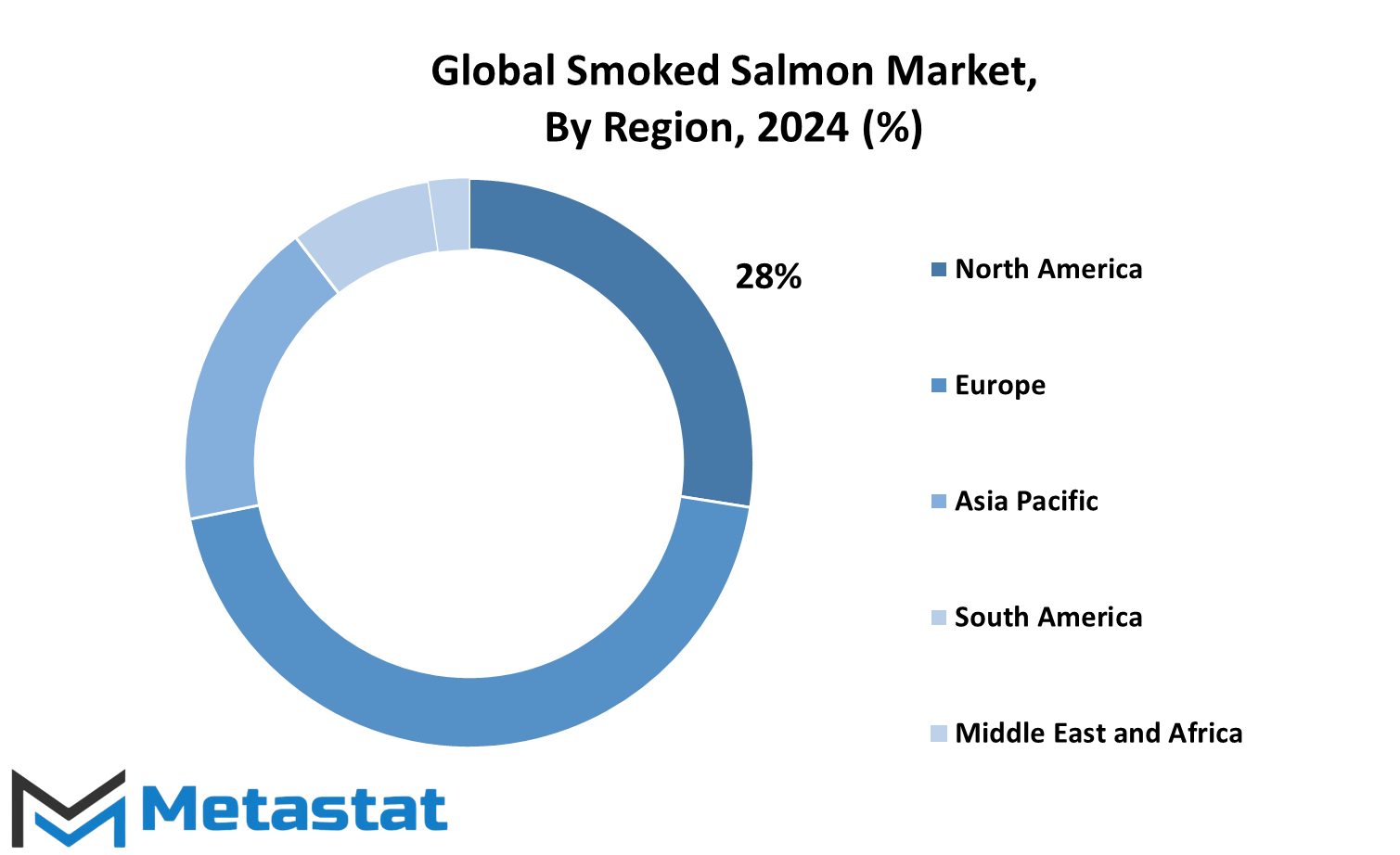
COMPETITIVE PLAYERS
The Global Smoked Salmon market is ready to undergo a full-scale renovation as growing demand for premium high-quality seafood fuels it. Market leaders Mowi ASA, Cermaq Group AS, Lerøy Seafood Group ASA, and SalMar ASA are setting their sights on new heights of innovation and sustainability according to customer preferences. The companies listed here, including Trident Seafoods Corporation, Labeyrie Fine Foods, and Multiexport Foods, will be some of the forces that will determine the future of the industry.
Strong competition will be witnessed by market leaders as smoked salmon's popularity rises. Mowi ASA will maintain investment in sustainable processes and leading edge technology. Their commitment to environmental responsibility, combined with an extensive global reach, positions them well to remain one of the players at the top of the market. The same goes for Cermaq Group AS, whose responsible farming approach will likely continue to be a major player, with rigorous quality control and traceability throughout its supply chain.
Lerøy Seafood Group ASA, having large experience in the seafood industry is likely to diversify its products and reach new markets, thereby posing additional challenge of competition. SalMar ASA, considering innovative thinking in aquaculture, is likely to cover much ground in sustainability and significantly make its mark in the development of the smoked salmon product line. Companies like Trident Seafoods Corporation, Labeyrie Fine Foods, and Multiexport Foods will continue to innovate through diversification of new products for demand, convenience, and premium smoked salmon products.
Apart from the major players in the industry, companies like Cooke Inc., High Liner Foods, and Tassal Group Limited are going to be competitive on the bases of differentiated products appealing to a niche consumer segment. Their strategic actions towards unique flavors in new markets are bound to carve out great share in the competitive market landscape.
In the Global Smoked Salmon market, there would be new entrants and disruptive innovation, changing the way smoked salmon is produced and consumed. With growing consumer awareness toward sustainable products and increasing sustainability considerations, companies which can adapt to these trends will thrive. Ahead of all this will lie the competitive landscape of smoked salmon continuing to drive quality, sustainability, and innovation as the basis for future growth.
Smoked Salmon Market Key Segments:
By Type
- Hot-Smoke Salmon
- Cold-Smoke Salmon
By Form
- Sliced
- Whole
- Cubed
By Distribution Channel
- Supermarkets/Hypermarkets
- Online Retail
- Specialty Stores
- Food Service (Restaurants, Hotels, etc.)
Key Global Smoked Salmon Industry Players
- Mowi ASA
- Cermaq Group AS
- Lerøy Seafood Group ASA
- SalMar ASA
- Trident Seafoods Corporation
- Labeyrie Fine Foods
- Multiexport Foods
- Cooke Inc.
- High Liner Foods
- Tassal Group Limited
- Icicle Seafoods Inc.
- Blue Circle Foods
- Thai Union Frozen Products (Meralliance)
- Young’s Seafood
WHAT REPORT PROVIDES
- Full in-depth analysis of the parent Industry
- Important changes in market and its dynamics
- Segmentation details of the market
- Former, on-going, and projected market analysis in terms of volume and value
- Assessment of niche industry developments
- Market share analysis
- Key strategies of major players
- Emerging segments and regional growth potential




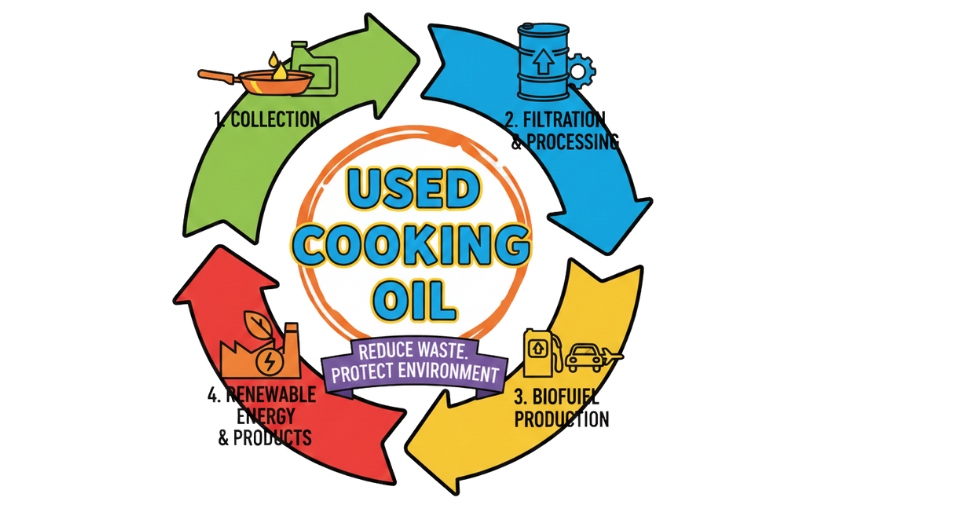
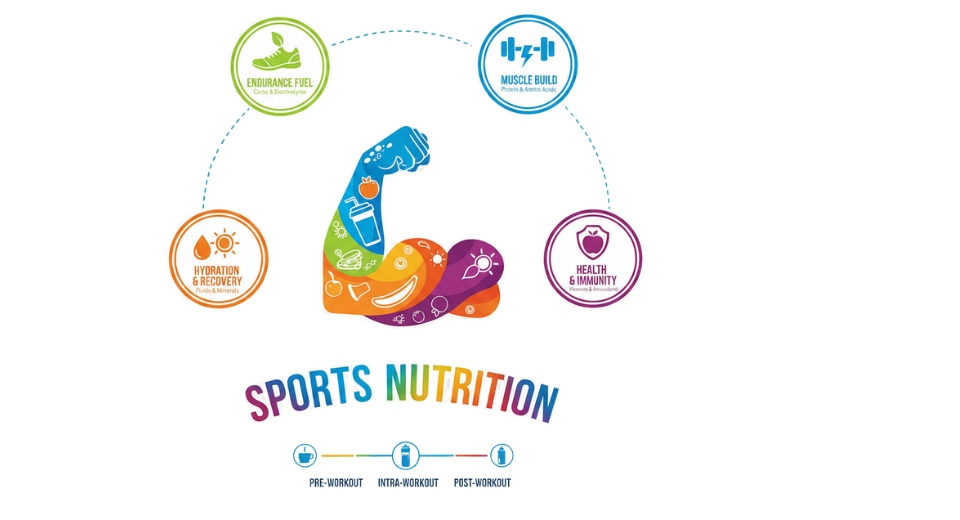
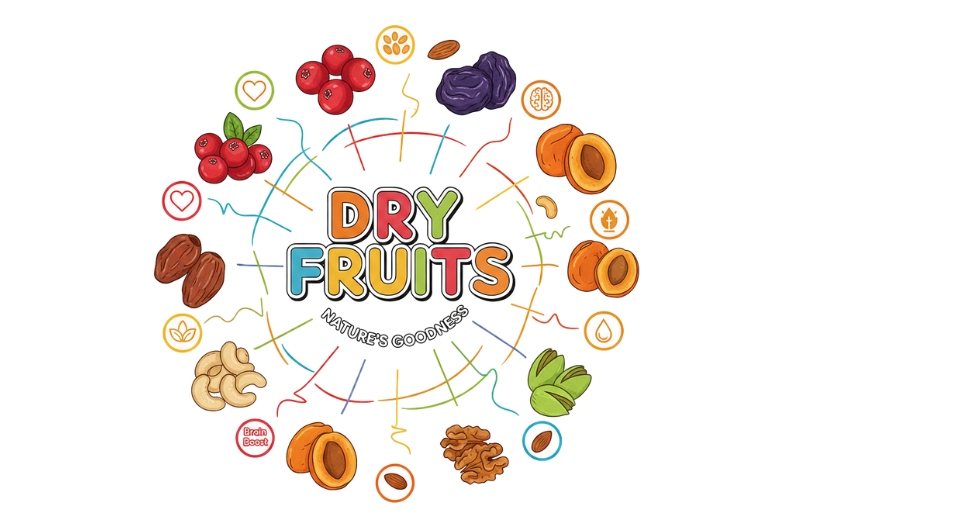

 US: +1 3023308252
US: +1 3023308252






